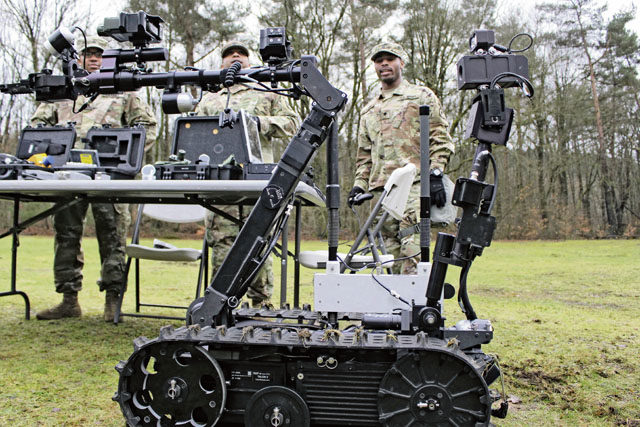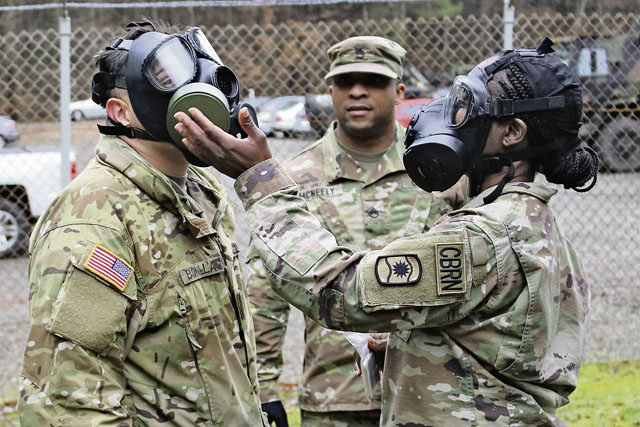
BREITENWALD TRAINING AREA, Germany — Active-duty and Army Reserve units came together to train on Chemical, Biological, Radiological and Nuclear hazards and maybe share some tears.
The Army Reserve’s 773rd Civil Support Team sent their six-person CBRN survey team to work with about 50 Soldiers from the active-duty 39th Transportation Battalion.
“Today we’re going over some basic CBRN tasks,” said. Staff Sgt. Jorge Alcocercejin, the CBRN NCO for the 39th Transportation Battalion.
CBRN training is important for the transportation Soldiers, to make sure they are ready to go forward do their jobs in any environment, he said.
“We’ve provided subject matter experts to supplement their CBRN day training,” said 1st Lt. Joshua Varnadoe, the 773rd CST’s survey team leader. “We’re all 74 series, so we’re all CBRN non-commissioned officers or officers.”
The Kaiserslautern-area units met at the training area near Landstuhl, where they set up stations to practice CBRN tasks, including identifying chemical agents with M8 and M9 paper, maintaining their M50 chemical protective masks and putting on and taking off Joint Service Lightweight Integrated Suit Technology protective garments.
The 39th just received the JSLIST suits through the 21st Theater Sustainment Command, so this was one of their first opportunities to train with them, Alcocercejin said.
The 773rd CST Soldiers also demonstrated the capabilities of their Talon IV CBRN survey robot, nicknamed “Veronica.” In addition, they showed the transportation Soldiers how their TruDefender FirstDefender chemical identification system works.

“We have a pretty robust full-time staff and as long as we have time within our schedule, we like to supplement and augment and assist the active component wherever we can,” Varnadoe said.
Helping other units sharpen their skills supports the 773rd CST’s own CBRN training, he said.
“One of the best ways to be proficient in our tasks is to teach others,” he added.
At the end of the training, the two units used the nearby gas chamber to test the equipment in a chemical environment with CS tear gas.
“That way, we can ensure that our pro masks work properly,” said Private 1st Class Jacob Lewis, an intelligence analyst in the 39th Transportation Battalion.
Before entering the chamber, the 773rd CST Soldiers made sure all the masks fit properly.
When they were ready, the Soldiers went into the chamber, walked around and did some jumping jacks and pushups with the masks on to demonstrate their effectiveness.
Then, while still inside, the Soldiers took off their masks to feel the effect of the gas. Tear gas irritates mucous membranes in the eyes, nose, mouth and lungs, causing tearing, sneezing and coughing.
They were allowed to exit the chamber, most of them showing all three symptoms as they ran out.
This was the first time Lewis trained on CBRN tasks since he left basic training a year ago.
“It’s been a really good refresher because the threat on today’s battlefield is always evolving, always changing so this is good to ensure that the Soldiers are properly prepared for that threat,” he said.


